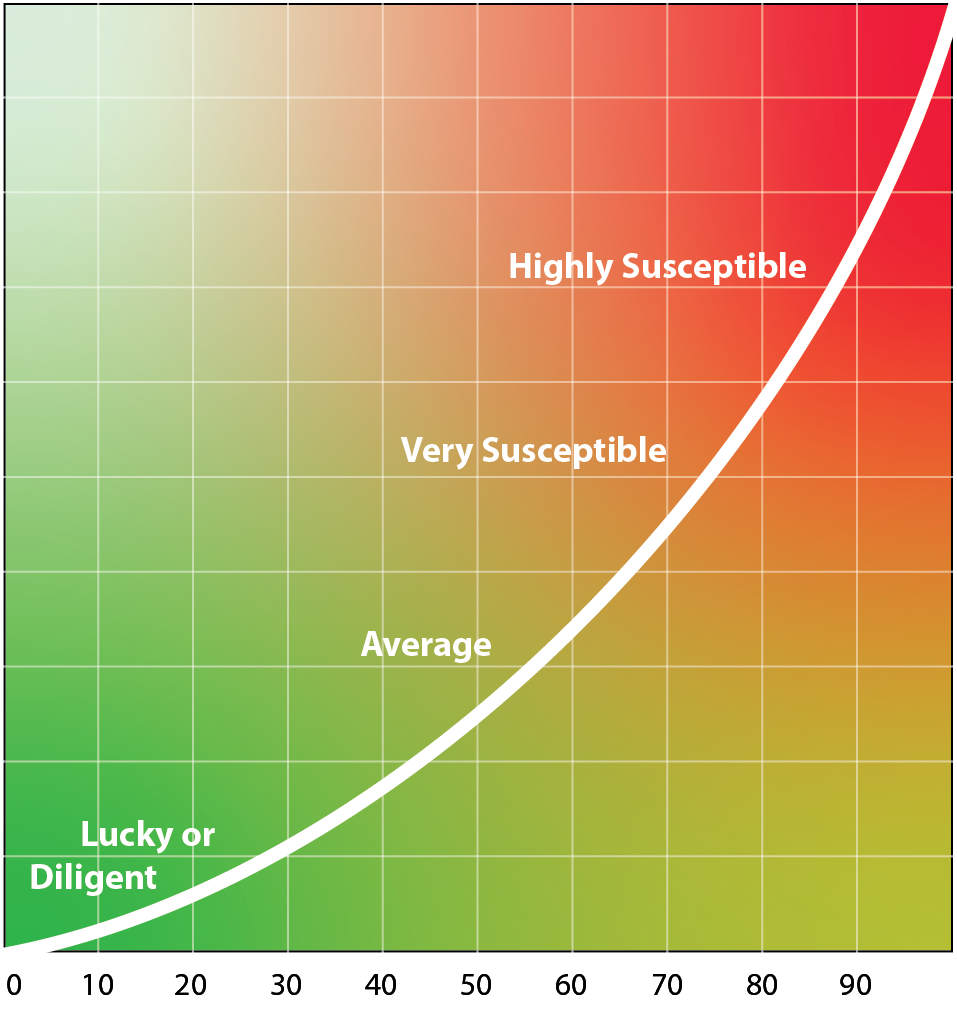The science of weight loss

Whether your metabolism is slow or fast, you can lose weight if you know what to do. People often talk about the speed of their metabolism, but do you know what “metabolism” really means?
Metabolism Explained
About 70% of the calories you burn each day go toward merely keeping you alive (called the Basal Metabolic Rate or BMR). These are things like breathing, circulating blood, maintaining body temperature (generating heat), producing new cells and recycling old ones, adjusting hormone levels, brain and nerve function, and sedentary tasks like sleeping, sitting or checking your smartphone.
About 20% is consumed in larger physical actions, like walking to the train, doing chores or exercising. This is the factor you can control with increased activity. But unless you spend the entire day in the gym, it will never rival the calorie consumption of simply existing.
And finally about 10% is used in digesting your food. This doesn’t vary much, whether you are eating “negative calorie foods” like celery that are said to take more calories to digest than they supply, or cupcakes. But that doesn’t mean you should binge on cupcakes!
Metabolism and Exercise
You can see from this that merely taking up space requires a lot of energy! This is great news for dieters, because it means that even though exercise is important for overall health, it’s more of an add-on than a requirement for weight loss. The average person burns about 2000 to 2400 calories without trips to the gym, and might burn an extra 200 calories with an intense workout session (or 8-10% more than just sitting around all day).
Furthermore, we need to avoid “double dipping” when thinking about calories burned. If you consider that we burn about 100 calories an hour via the BMR, it means that although the treadmill may say you burned 200 calories in an hour of race walking, you’d have burned 100 merely standing there, leaving you with an actual deficit of 100 for your effort — much less than the gym would like you to believe!
But hope is not lost. Your muscles are more biologically active than most other tissues in your body — meaning they burn more calories even at rest. And we’re not talking only about the muscles you can see, like biceps. You have a lot of “skeletal muscle” even if you’re not a weightlifter — these are the muscles that support your spine, hold your head upright, help you breathe and allow you to walk and move. Exercise helps you to maintain or add muscle, which over time has a marginal but useful effect on calorie burning, and helps keep your metabolism from slowing down with advancing years. So exercise is definitely a good strategy to maintain your metabolism — just don’t count on it as your primary strategy to burn off donuts.
Weight Loss Science
When we think about losing weight, the assumption is we’ll be losing fat, but weight loss is more complicated than that, because not all weight loss is necessarily fat loss. When we reduce calories, our bodies don’t exclusively turn to burning excess fat for fuel. So at iDiet, we prefer to focus on the question “how much fat can I lose?” rather than the question “how much weight can I lose?”. We optimize for fat loss.
In an ideal world, the body would only burn fat, we’d lose belly fat first, and it would be easy to look like a fitness model. But that’s unfortunately not the case. Let’s look at weight loss from a scientific perspective to better understand how to be successful.
When you begin a diet and reduce your calories, the body can burn fat, but it can also burn lean muscle tissue if you get too hungry. This is a cruel trick of nature, and one of the reasons that crash dieters tend to regain their weight. As we saw earlier, if you crash-diet away your lean muscle mass, your metabolic rate will slow. The iDiet is careful to avoid this problem, but you should be suspicious of any fad diet that promises extreme weight loss or near-overnight results — it’s likely stealing from your future for the illusion of results in the present. Since one reason for losing weight is to improve your future health, we should go about weight loss in the healthiest and most sustainable ways we can.
Following a fad diet is stealing from your future for the illusion of results in the present. Click To TweetSo back to the original question of fat loss. Let’s take a look at all the reasons the scale might show a lower value when you begin a diet. We’ll discuss each one in turn, as well as how to optimize the process.
Fat Loss
Research shows the typical healthy rate for fat loss is 1-2 pounds of fat per week. You can also use a rule of thumb of burning 1% of your bodyweight in a week as fat, under ideal conditions. So if you are 300 pounds, that would be 3 pounds of fat. 180 pounds would be 1.8 pounds of fat, and so on.
Body fat is an energy storage system, designed for our long-term survival in times of famine. Fat holds more than twice as much energy per gram than carbohydrate does, so it’s an efficient system. Even a skinny, athletic adult carries about 130,000 calories in their relatively small amount of body fat! That’s a lot of survival planning.
How we store fat
When we eat starches and sugars, our body breaks these down into glucose, which is the easiest fuel for our cells to burn (oxidize) for energy. If we eat too many calories, our bodies convert the excess glucose into fatty acids, and lock them away in the form of adipose tissue for later use. Excess amino acids from protein we ate can also be converted to fatty acids for storage. As long as we have excess energy from food in our bloodstream, regardless of the form, the fat cells remain untapped, and growing. This process of both handling excess carbohydrates in the blood and the inhibition of the breakdown of fat is controlled by a complex hormone signaling system, which includes insulin as one of the primary signals. Elevated blood sugar from a meal triggers the release of insulin, which tells our fat cells to hold onto their energy stores, and tells our muscle and other tissues to absorb and burn the glucose first.
How we burn fat
Once the level of glucose present in the blood drops, insulin levels also drop and the body starts to mobilize energy from your fat cells instead. It’s a complex process triggered by a number of hormones, and carried out by a system of enzymes and coenzymes, first to unlock the fat cells, then to transport the fatty acids into your cells, and finally to break them down into smaller units for consumption. It’s important to note that our fat cells will not release their energy stores if insulin is present, so a diet that keeps your blood sugar stable and in a healthy zone is key to fat loss. This means avoiding sugar, refined carbohydrates, white flour, and many fast-digesting packaged foods. Slow-digesting whole foods are your diet’s best friends.
A diet that keeps your blood sugar stable and in a healthy zone is key to fat loss. Click To TweetMuscle Loss
If we have used up all available glucose, and used up the fatty acids that can be slowly unlocked from the fat cells, the body will turn to other tissues, like muscle. But we don’t want to encourage that. This is why crash diets are a bad idea. Diets that lower calories too far put us into starvation mode, which causes cannibalization of our lean muscle along with fat, and slows down our metabolism. There is a “Goldilocks zone” of calorie restriction that keeps us in the ideal zone for fat burning, and that is where iDiet’s research-based menus really shine. The iDiet keeps calories in the ideal range to stimulate fat release without throwing the body into starvation mode. We also build our menus around a special ratio of protein, carbs and fats to encourage muscle preservation and prioritize fat burning. The iDiet nutrient ratio also has the benefit of helping us feel fuller and keep hunger at bay. And if we are not hungry, we have fewer cravings. So it’s really a great place to be.
Whole foods are your diet’s best friends. Click To TweetWater Weight
Another reason the scale might show a lower value is loss of water. Water molecules are both bound up in fat and glucose, as well as attached to them. Whenever we burn these fuels, carbon and water are released. We breathe out the carbon as CO2, and pee the water out naturally. When you first start a diet, weight loss appears to be more rapid in the first two weeks because extra water that’s been bound up in your body is being released as your energy stores are tapped. This is a good and perfectly natural thing. This is also why you may find your weight jumps up again if you have a cheat day or binge at a birthday party. Water molecules will attach to any new fat or glycogen you store, raising the number on the scale faster than you might expect after a binge.
If we can control hunger, we have fewer cravings. Click To TweetConclusions
Weight gain and weight loss are complicated. The process is controlled by food composition, hormone signaling, calorie balance, and your lifestyle, which includes sleep, physical activity and stress. To achieve weight loss, you can see how important it is to keep yourself in the “Goldilocks zone” of not too fast, and not too slow. There’s nothing wrong with slow weight loss, other than feelings of despair that could accompany lack of progress. In fact, slow weight loss helps to keep your metabolism high. But with science on our side, we can maximize the rate of healthy, responsible fat loss to get you to your goal weight both quickly and safely, and to set you up for a lifetime of healthy weight maintenance, with no rebound or weight regain. No one wants to yo-yo back up after succeeding at weight loss, and following a responsible, science-based diet plan is the best way to achieve lasting results.
If you examine the most responsible diet plans, you will find good food at the foundation. Eat more vegetables, whole fruits (not juices), fiber-rich foods like whole grains and beans, lean proteins, and nuts in moderation. Avoid processed foods, refined sugar, refined flour, fried foods and excessive fat. iDiet recommends this, of course, and also adds in a variety of proprietary techniques too numerous to fully explain here. We use a unique nutrient composition that balances fiber, protein, fat and filling foods to satisfy hunger with fewer calories. Our recipes and meal recommendations contain a wide variety of delicious substitutes for things we commonly crave, like chocolate desserts and fast food. We teach a number of new healthy tricks, techniques and choices that work to retrain your brain to prefer healthier foods over old unhealthy choices. And since we know that forming new habits is hard at first, we offer both group and personal support to make the transition as effortless as possible.
It may not be exciting to think about changing your familiar food choices or “only” losing 1 or 2 pounds of fat a week, but if you follow a smart diet based on delicious whole, healthy foods — one that ensures your losses are all fat and not lean muscle, then that’s 4-8 pound of fat loss a month, or 50-100 pounds of fat in a year. And that is not only tasty but very exciting indeed.
Register Today
Choose the program that’s right for you.

 Yes! I want to receive a 38-page cookbook, and be informed of upcoming classes. No obligation, instant download.
Yes! I want to receive a 38-page cookbook, and be informed of upcoming classes. No obligation, instant download. 